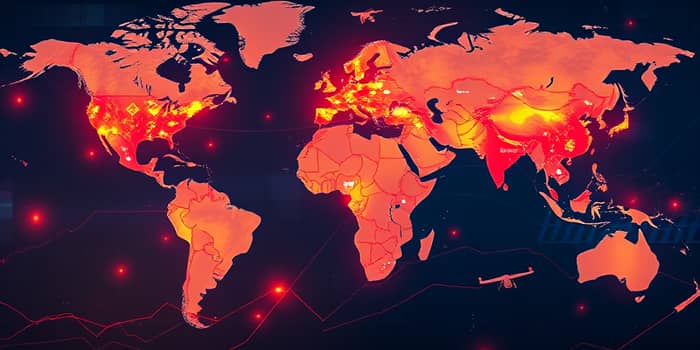
In an era of mounting uncertainty, investors and policymakers alike must navigate a labyrinth of global tensions to safeguard capital and ensure stability. Drawing on comprehensive data and expert assessments, this article unveils a detailed geopolitical risk landscape of today’s world and offers actionable insights to mitigate potential shocks.
From military flashpoints to digital battlegrounds, the interplay between politics and markets is more pronounced than ever. Understanding these dynamics is crucial for informed decision making and effective risk management strategies.
Geopolitical risk encompasses a wide spectrum of destabilizing forces, including wars, terrorist acts, state tensions, and disputes over territory that resist peaceful resolution. Modern definitions have expanded to cover interventions by non-state actors, corporate maneuvers, and systemic challenges such as climate change.
The The Geopolitical Risk Index measure quantifies these threats by blending media analysis with expert evaluations, tracking both potential hazards and actual events to produce a dynamic measure of global risk levels.
As we look ahead, several regions stand at the epicenter of conflict and strategic rivalry. These hotspots exert profound pressure on energy supplies, commodity flows, and investor sentiment.
Beyond these flashpoints, issues like climate-induced resource scarcity and populist political shifts further contribute to a complex geopolitical tapestry.
Global trade is fragmenting into competing blocs as protectionist policies gain traction. New US tariffs and retaliatory measures from the EU, China, and other partners signal a shift away from multilateralism.
Geopolitical shocks translate into tangible market reactions. Equity indices in developed markets often fall by around 1 percent following major events, while emerging markets can drop by up to 2.5 percent on average.
Sovereign risk premiums can widen by roughly 30 basis points in advanced economies and 45 basis points in emerging markets after a shock, sometimes quadrupling in the latter group. These shifts underscore the importance of closely monitoring geopolitical developments for portfolio protection.
These data points reveal the multifaceted ways in which geopolitical turmoil translates into market volatility and risk perception shifts.
Energy and food price spikes triggered by conflicts feed directly into inflationary pressures, threatening consumer purchasing power and challenging monetary authorities. Despite some resilience—such as US growth holding near three percent—rising costs remain a drag on global expansion.
Supply chains, once optimized for efficiency, are now being reconfigured for resilience. Governments and corporations are securing critical minerals, diversifying suppliers, and rerouting logistics to reduce exposure to geopolitical chokepoints.
The Asia-Pacific region, long hailed as the growth engine of the world, faces both opportunity and peril. Strategic competition over technology and resources intensifies, even as demographic trends support robust demand.
In Europe, the Ukraine conflict, trade fragmentation, and a surge in cyber threats keep policymakers vigilant. Energy security and digital defense strategies have climbed to the top of national agendas.
Across the Atlantic, policy swings under shifting political leadership in the United States inject additional uncertainty into global markets. Renewed protectionism and tariff threats demand agile responses from multinational firms.
Emerging markets remain particularly vulnerable. With limited buffers against capital flight, their assets can suffer sharp losses and soaring risk premiums, underscoring the need for prudent macroeconomic management and international cooperation.
While the geopolitical landscape may seem daunting, proactive measures can mitigate risks and uncover opportunities. By integrating geopolitical analysis into financial planning, organizations can anticipate shocks and build resilience.
The latent interplay between geopolitical tensions and financial markets demands unwavering attention. By mapping risks, interpreting data, and implementing robust strategies, investors and policymakers can navigate volatility with confidence. Ultimately, understanding the dynamic global risk environment empowers us to turn uncertainty into strategic advantage and build a more resilient future.
References













